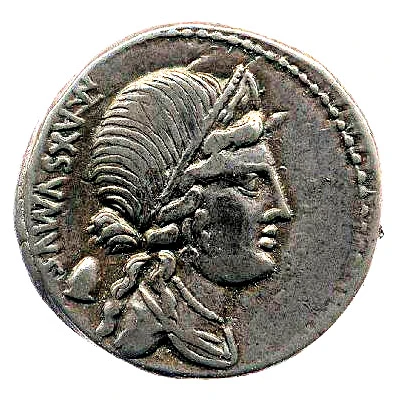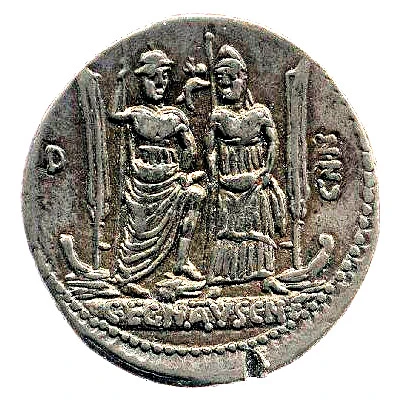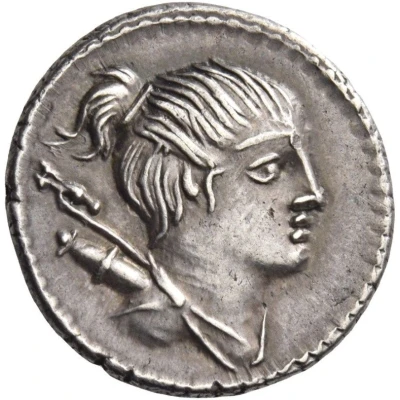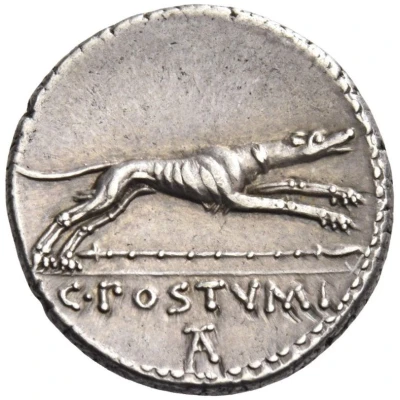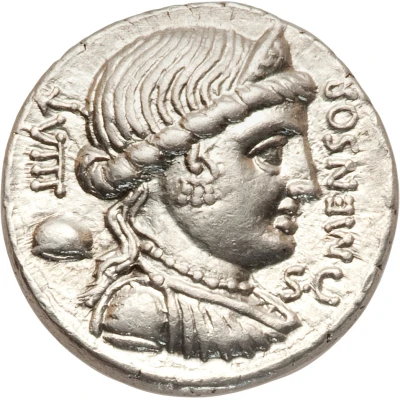
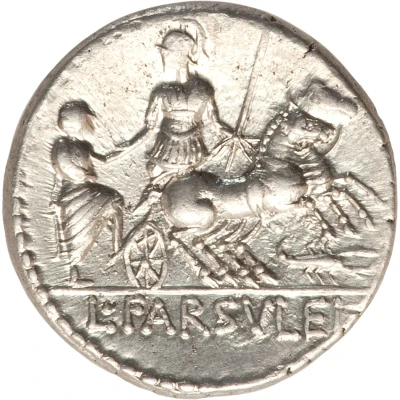

© Heritage Auctions
Denarius Farsuleia: Lucius Farsuleius Mensor; S•C MENSOR / L•FARSVLEI 75 BC
75 BC year| Silver | 3.89 g | 19 mm |
| Issuer | Rome › Roman Republic (509 BC - 27 BC) |
|---|---|
| Period | Republic (509 BC - 27 BC) |
| Type | Standard circulation coin |
| Year | 75 BC |
| Value | Denarius (1) |
| Currency | Denarius of 16 Asses (141 – 27 BC) |
| Composition | Silver |
| Weight | 3.89 g |
| Diameter | 19 mm |
| Shape | Round (irregular) |
| Technique | Hammered |
| Orientation | Variable alignment ↺ |
| Demonetized | Yes |
| Updated | 2024-10-06 |
| Numista | N#66962 |
|---|---|
| Rarity index | 93% |
Reverse
Helmeted warrior standing facing with head left, in biga right, holding reins and spear with left hand, helping togate figure to mount into biga with right hand; below, scorpion.
Part of moneyer mark in exergue.
Border of dots.
Script: Latin
Lettering: L•FARSVLEI
Translation: Lucius Farsuleius
Edge
Plain
Comment
The gens Farsuleia was an obscure family of the plebeian order, known only by its silver coins.Interesting fact
The Denarius coin was minted during the Roman Republic, specifically in 75 BC. It features an image of a fasces, which is a bundle of rods tied together with a protruding axe blade. The fasces symbolized the power and authority of the Roman state, and it was often depicted on coins and other official symbols of the Roman Republic. In addition to its symbolic significance, the Denarius coin was also an important medium of exchange during its time. It was made of silver and had a standardized weight and purity, which made it a reliable and trustworthy form of currency. The Denarius was used for a wide range of transactions, from buying goods and services to paying taxes and debts. Overall, the Denarius coin is an interesting piece of history that provides a glimpse into the economic and political systems of ancient Rome.
